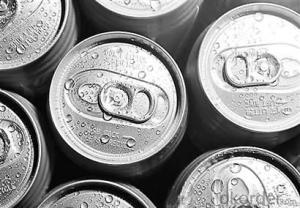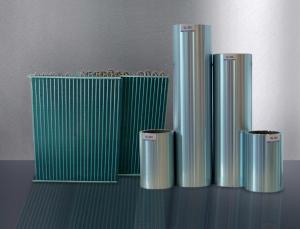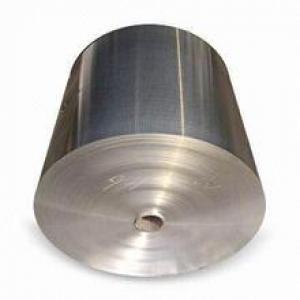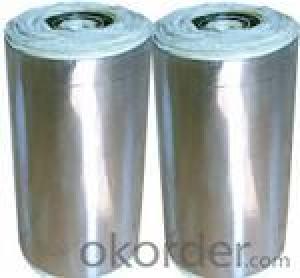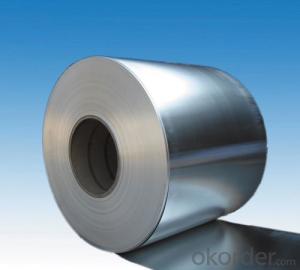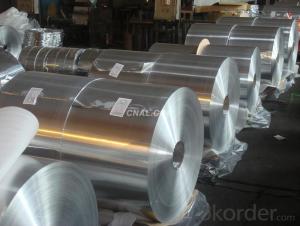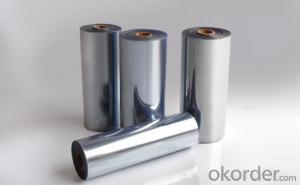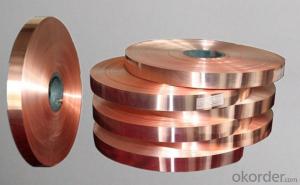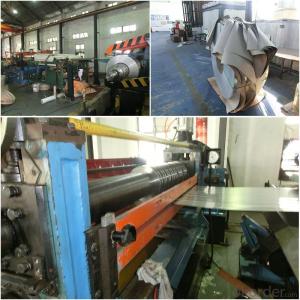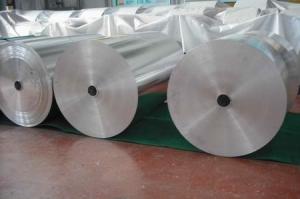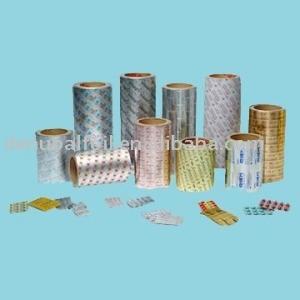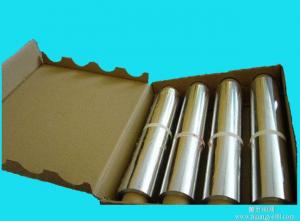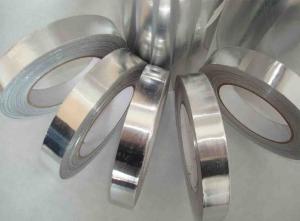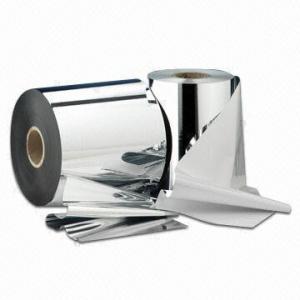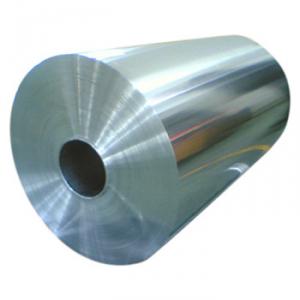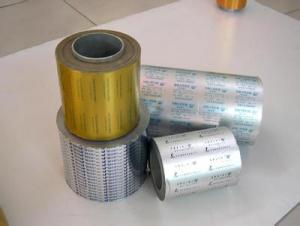Aluminum Foil for Can Stock
- Loading Port:
- China Main Port
- Payment Terms:
- TT or LC
- Min Order Qty:
- -
- Supply Capability:
- -
OKorder Service Pledge
OKorder Financial Service
You Might Also Like
Aluminium alloys with a wide range of properties are used in engineering structures. Alloy systems are classified by a number system (ANSI) or by names indicating their main alloying constituents (DIN and ISO).
The strength and durability of aluminium alloys vary widely, not only as a result of the components of the specific alloy, but also as a result of heat treatments and manufacturing processes. A lack of knowledge of these aspects has from time to time led to improperly designed structures and gained aluminium a bad reputation.
One important structural limitation of aluminium alloys is their fatigue strength. Unlike steels, aluminium alloys have no well-defined fatigue limit, meaning that fatigue failure eventually occurs, under even very small cyclic loadings. This implies that engineers must assess these loads and design for a fixed life rather than an infinite life.
Another important property of aluminium alloys is their sensitivity to heat. Workshop procedures involving heating are complicated by the fact that aluminium, unlike steel, melts without first glowing red. Forming operations where a blow torch is used therefore require some expertise, since no visual signs reveal how close the material is to melting. Aluminium alloys, like all structural alloys, also are subject to internal stresses following heating operations such as welding and casting. The problem with aluminium alloys in this regard is their low melting point, which make them more susceptible to distortions from thermally induced stress relief. Controlled stress relief can be done during manufacturing by heat-treating the parts in an oven, followed by gradual cooling—in effect annealing the stresses.
The low melting point of aluminium alloys has not precluded their use in rocketry; even for use in constructing combustion chambers where gases can reach 3500 K. The Agena upper stage engine used a regeneratively cooled aluminium design for some parts of the nozzle, including the thermally critical throat region.
Another alloy of some value is aluminium bronze (Cu-Al alloy).
Aluminium foil acts as a total barrier to light and oxygen (which cause fats to oxidise or become rancid), odours and flavours, moistness, and germs, it is used broadly in food and pharmaceutical packaging. The purpose of aluminium is to make long-life packs (aseptic processing|aseptic packaging) for drinks and dairy goods, which allows storing without refrigeration. Aluminium foil containers and trays are used to bake pies and to pack takeaway meals, ready snacks and long life pet foods.
Aluminium foil is widely sold into the consumer market, often in rolls of 500 mm (20 in) width and several metres in length.It is used for wrapping food in order to preserve it, for example, when storing leftover food in a refrigerator (where it serves the additional purpose of preventing odour exchange), when taking sandwiches on a journey, or when selling some kinds of take-away or fast food. Tex-Mex restaurants in the United States, for example, typically provide take-away burritos wrapped in aluminium foil.
Aluminium foils thicker than 25 μm (1 mil) are impermeable to oxygen and water. Foils thinner than this become slightly permeable due to minute pinholes caused by the production process.
Aluminium foil has a shiny side and a matte side. The shiny side is produced when the aluminium is rolled during the final pass. It is difficult to produce rollers with a gap fine enough to cope with the foil gauge, therefore, for the final pass, two sheets are rolled at the same time, doubling the thickness of the gauge at entry to the rollers. When the sheets are later separated, the inside surface is dull, and the outside surface is shiny. This difference in the finish has led to the perception that favouring a side has an effect when cooking. While many believe that the different properties keep heat out when wrapped with the shiny finish facing out, and keep heat in with the shiny finish facing inwards, the actual difference is imperceptible without instrumentation.The reflectivity of bright aluminium foil is 88% while dull embossed foil is about 80%.
We provide a full range of precision aluminum strip for almost any application. We produce aluminum strip in a wide variety of alloys, including clad composites. Our aluminum strip can be produced in standard dimensions or custom made to your special requirements. We produce both imperial and metric units. We manufacture in compliance with the main international specifications, and tighter tolerances or custom tempers are available upon request. We offer various surface conditions, custom finishes (painting, anodizing, embossing), special processing, and multiple packaging options to meet our customer's unique requirements. The following is a summary of our capabilities.
Manufactured in compliance with the main international specifications and standards, including: Aluminum Association, ASTM, EN, and DIN.
We can also manufacture in compliance with other international standards including:ASME, SAE, AMS, AWS, FED, MIL, QQ, ISO, BS, AFNOR, JIS and GOST.
Manufactured in compliance with the main international specifications and standards.
Tighter tolerances are available upon request.
Aluminium (or aluminum; see spelling differences) is a chemical element in the boron group with symbol Al and atomic number 13. It is a silvery white, soft, ductile metal. Aluminium is the third most abundant element (after oxygen and silicon), and the most abundant metal in the Earth's crust. It makes up about 8% by weight of the Earth's solid surface. Aluminium metal is so chemically reactive that native specimens are rare and limited to extreme reducing environments. Instead, it is found combined in over 270 different minerals.The chief ore of aluminium is bauxite.
Aluminium is remarkable for the metal's low density and for its ability to resist corrosion due to the phenomenon of passivation. Structural components made from aluminium and its alloys are vital to the aerospace industry and are important in other areas of transportation and structural materials. The most useful compounds of aluminium, at least on a weight basis, are the oxides and sulfates.
Despite its prevalence in the environment, no known form of life uses aluminium salts metabolically. In keeping with its pervasiveness, aluminium is well tolerated by plants and animals. Owing to their prevalence, potential beneficial (or otherwise) biological roles of aluminium compounds are of continuing interest.
The earliest citation given in the Oxford English Dictionary for any word used as a name for this element is alumium, which British chemist and inventor Humphry Davy employed in 1808 for the metal he was trying to isolate electrolytically from the mineral alumina. The citation is from the journal Philosophical Transactions of the Royal Society of London: "Had I been so fortunate as to have obtained more certain evidences on this subject, and to have procured the metallic substances I was in search of, I should have proposed for them the names of silicium, alumium, zirconium, and glucium."
Davy settled on aluminum by the time he published his 1812 book Chemical Philosophy: "This substance appears to contain a peculiar metal, but as yet Aluminum has not been obtained in a perfectly free state, though alloys of it with other metalline substances have been procured sufficiently distinct to indicate the probable nature of alumina."[69] But the same year, an anonymous contributor to the Quarterly Review, a British political-literary journal, in a review of Davy's book, objected to aluminum and proposed the name aluminium, "for so we shall take the liberty of writing the word, in preference to aluminum, which has a less classical sound."
The -ium suffix conformed to the precedent set in other newly discovered elements of the time: potassium, sodium, magnesium, calcium, and strontium (all of which Davy isolated himself). Nevertheless, -um spellings for elements were not unknown at the time, as for example platinum, known to Europeans since the 16th century, molybdenum, discovered in 1778, and tantalum, discovered in 1802. The -um suffix is consistent with the universal spelling alumina for the oxide (as opposed to aluminia), as lanthana is the oxide of lanthanum, and magnesia, ceria, and thoria are the oxides of magnesium, cerium, and thorium respectively.
The aluminum spelling is used in the Webster's Dictionary of 1828. In his advertising handbill for his new electrolytic method of producing the metal in 1892, Charles Martin Hall used the -um spelling, despite his constant use of the -ium spelling in all the patents[58] he filed between 1886 and 1903. It has consequently been suggested[by whom?] that the spelling reflects an easier-to-pronounce word with one fewer syllable, or that the spelling on the flyer was a mistake.[citation needed] Hall's domination of production of the metal ensured that aluminum became the standard English spelling in North America
- Q:To people below a certain age, that question may be complete nonsenseTo ones above a certain age, you know exactly what I meanDo you remember having to do this?Thanks.
- You do NOT cut it or peel it ahead of time of baking itYou'll need aluminum foil, a baking dish or pan a forkPreheat your oven to 375 degrees FLine the pan or baking dish with foilDo NOT wrap the yam insideUsing the fork's tines, poke holes into the yamDo NOT poke holes too deep! You're just giving it air holes while it bakes, not trying to spear it onto the fork's tinesPlace the yam onto the foil lined pan or dish, then place into the preheated ovenBake for one hour, 60 minutes To check to see if it's done, using another fork, push it into the yam all the way to the foilIf the yam is done, it will be softIf you encounter any resistance, it's still hard needs more cooking timeIF you need more time, bake for an additional 10 minutes, checking again with the forkIt should finish cooking by thenCut the yam open after it's done bakingServe with butter, salt, pepper and/or a little bit of brown sugar Yams are also known as sweet potatoesSame thing.
- Q:for a science project we had to make an insulated cupi made it with a small plastic cup put into a pig one and the gap between them is filled with polyerster fiberfillthe outside of the small sup is surrounded by aluminum foilthe outside ad inside of big cup is surrounded with aluminum foil.what would u call this
- The best recipe is on the package except when the corned beef is done, coat it with a mixture of german mustard, and horseradish, then bake it at 350 while you cook the vegetables in the pan juices.
- Q:What are the advantages of aluminum foil?
- Aluminum foil material is soft metal film, the main advantages of which are as follows: 1.It is moisture-proof, air sealing, light shading, wear resistant, fragnance-holding, non-toxic and tasteless; 2.It has a silvery luster and is easy to print all kinds of beautiful patterns of all colors; 3. After aluminum foil composited with plastic and paper, it integrates shielding of the aluminum foil, strength of paper and thermal insulation of plastic, and further improves the shielding function of aluminum foil tape as packing material from moisture, air, ultroviolet rays and bacterial, which has greatly expanded the application market of aluminum foil.
- Q:I have a beef brisketMy husband had some at a shindig at one of the plumbing supply housesHe doesn't liked boiled corned beef and cabbage, but this he likedHe thinks it was baked he said it was tender, but he doesnt know what spices or how to cookDoes anyone have any simple recipes with ingredients you normally have in the houseI dont have any beerAny Ideas?.
- INGREDIENTS 1 (3 pound) beef brisket, trimmed of fat 1 medium onion, thinly sliced salt and pepper to taste 1 (12 fluid ounce) can beer 1 (12 ounce) bottle tomato-based chili sauce 3/4 cup packed brown sugar DIRECTIONS Preheat the oven to 325 degrees F (165 degrees C)Season the brisket on all sides with salt and pepper, and place in a glass baking dishCover with a layer of sliced onionsIn a medium bowl, mix together the beer, chili sauce, and brown sugarPour over the roastCover the dish tightly with aluminum foilBake for 3 hours in the preheated ovenRemove the aluminum foil, and bake for an additional 30 minutesLet the brisket rest and cool slightly before slicing and returning to the dishReheat in the oven with the sauce spooned over the sliced meat.
- Q:Whats something you HAVE to take with you when you go camping?
- Beer Tent/ tarps Air Mattress Mattress Pump Broom Camping chairs Fold-out table Sheets Sleeping Bags Pillows Extra blankets Bug Spray Medicine Soap/shampoo/washcloth Towels Deodorant, toothpaste, toothbrush Hand sanitizer Sunscreen Sunburn gel Ziplock bags Dishsoap/sponge Roll of T.PBaby wipes Paper towels Q-Tips Shower bag Food Condiments Grill Stovetop burner Propane tanks Matches Grill accessories Cups Can opener Aluminum foil Table Cloth Pot/pan Dishwashing tub Dry dish-rack Durable paper plates Silverware Water Shovel Frisbee/football Water guns Horseshoes Clothes Water Shoes Flip flops Raincoat/poncho Hiking boots Tennis shoes Garbage bags Bag for empty cans on canoe Clothes pins Clothes line Scissors/knife Tool kit Flashlight Duct Tape
- Q:I am enrolled in a Designs class at the university and we need to have 12 samples of different texturesIn general, what are some unique texture ideas?
- Here are some ideas that might help: carpet, netting, tree bark, corrugated carboard, crumpled up newspaper, onion skin, aluminium foil, linen,orange peel, bubble wrap, leather, foam rubber, polystyrene packaging, plant leaves,silk, rusted metal, linoleum, sandpaper, .
- Q:Why is aluminum is a suitable material to use in making cans based on it's physical and chemical properties?
- Bake (Huge one), with stuffing in its butt.
- Q:So I have this pillbury ready bake cookie dough thing.I want to bake one GIANT cookie cake thing.I have about 4/5 of the bag left.Will that be enough? 4/5 is about 672.8grams.So is 672.8 grams of cookie dough for a giant cookie cake?And how do I go about baking it? And how do I know if it's fully cooked so I know when to take it out of the oven?I'm new to baking, please help!
- Bake the cookie in a pizza panSpread it out in the pan as far out as it will go but no thinner than 1/2 inchYou will bake it at 350 degrees for 25-30 minutes or until they are lightly browned and the center has become springy when touched lightlyHope that helpsAgain, bake it on a round pizza panIf you don't have one, shape aluminum foil to form a round and put on a cookie sheet before putting your dough in it.
- Q:I need to find a setback advance chart for bending SS tubing with a hand bender.or possibly just the formula (though the chart would be best)Thanks in advance
- You could try these sites to see if they have what you needOne had charts, but mentions that stainless steel is less predictable than aluminumIf these sites don't work for you, you could contact the administrators and posters directly to see if they could give you answersOr you could pop by a book store or hardware store to see if they have books that have the info you needHope you can get bent properly!
1. Manufacturer Overview |
|
|---|---|
| Location | |
| Year Established | |
| Annual Output Value | |
| Main Markets | |
| Company Certifications | |
2. Manufacturer Certificates |
|
|---|---|
| a) Certification Name | |
| Range | |
| Reference | |
| Validity Period | |
3. Manufacturer Capability |
|
|---|---|
| a)Trade Capacity | |
| Nearest Port | |
| Export Percentage | |
| No.of Employees in Trade Department | |
| Language Spoken: | |
| b)Factory Information | |
| Factory Size: | |
| No. of Production Lines | |
| Contract Manufacturing | |
| Product Price Range | |
Send your message to us
Aluminum Foil for Can Stock
- Loading Port:
- China Main Port
- Payment Terms:
- TT or LC
- Min Order Qty:
- -
- Supply Capability:
- -
OKorder Service Pledge
OKorder Financial Service
Similar products
New products
Hot products
Hot Searches
Related keywords
